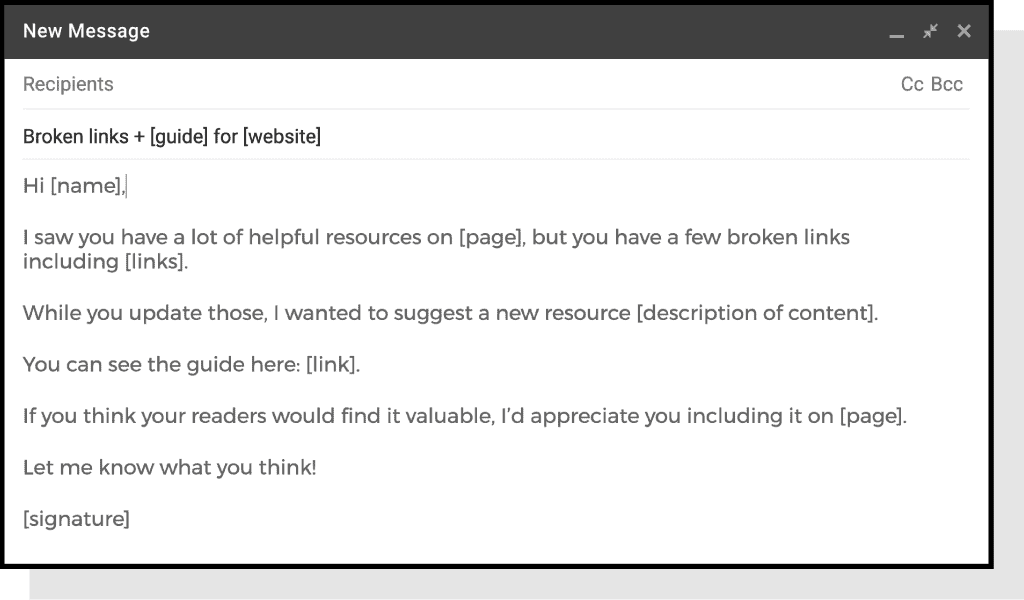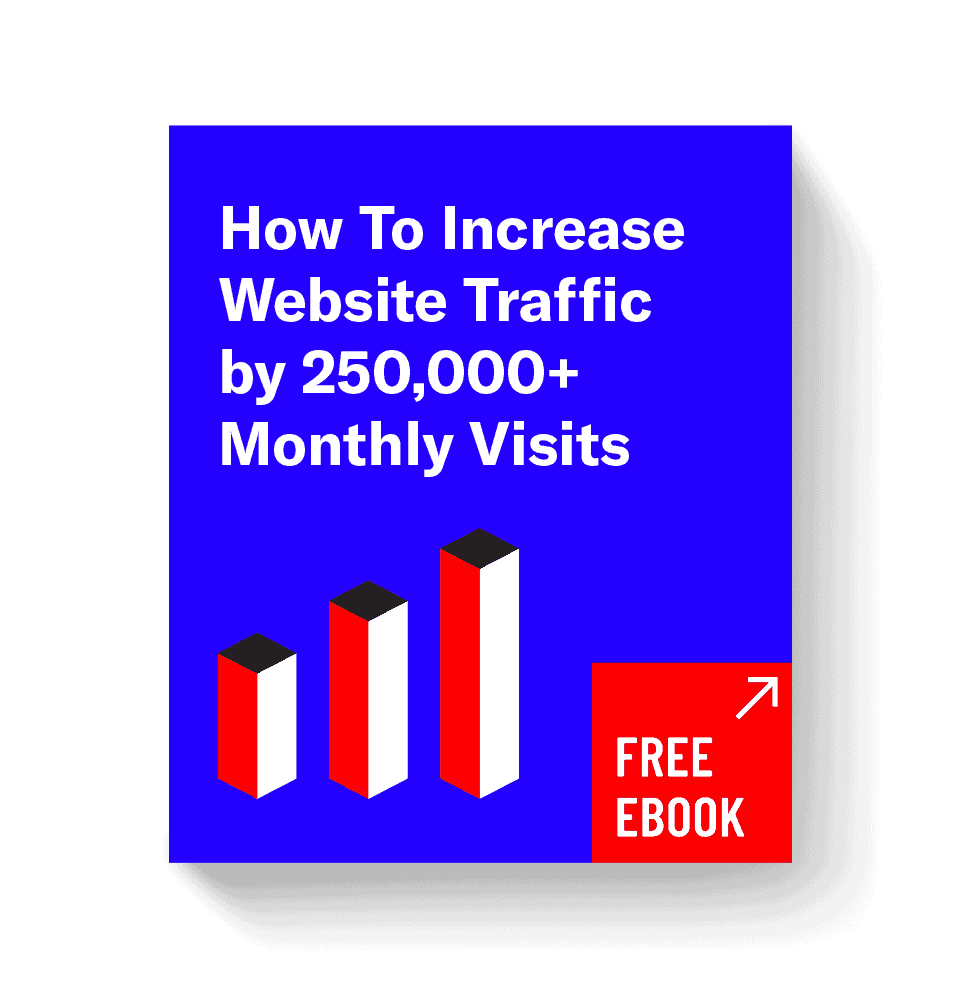The cost of a link is roughly the same price as sailing to the Caribbean.
Content creation and promotion generally costs around $600-$800 per link in the short term. Meanwhile, routes that start from Florida and sail to the Bahamas cost roughly $1,000 on budget cruise lines — and those come with a piña colada on the beach.
What I mean is, if you’re going to spend the price of a beach vacation on creating content, you better know how to get backlinks and quality backlinks at that.
In this post, we reveal 15 link building tactics that we use for our clients to generate unmatched ROI through strategic backlinks. These tactics allow our 100-person content marketing agency to scale acquisition, generating 5,000+ links per month for our clients in total.
What Are Backlinks and Why Are They Important for SEO?
In SEO, backlinks are when another website links to yours. This may be a hyperlink within the text, a button, or a clickable link on an image. Each of these counts as a backlink, which is one of the key factors for helping your website and its pages rank well.
Google aims to show search results that have accurate information. Backlinks are a key Google ranking factor because they send out a signal of trust. Basically, the more people vouching for your content, the better. For example, a website with one backlink won’t be as trustworthy as one with 100.
The quality of the backlinks matters, too. The value of a link depends on the authority, perceived quality, and relevancy of a site. A single link from a high-tier news site is worth inherently more than 10 links from low-authority guest posting sites.
Now that you understand the importance of backlinks, we have 15 different strategies for you to get relevant backlinks for your content. A major part of these strategies is digital PR, which is reaching out to different websites to gain backlinks.
Table of Contents:
- Competitor Links
- Link Moves
- Broken Link Building
- Reciprocal Linking
- Guest Posting
- Long-Form Resources
- Link Reclamation
- Review Roundups
- Pitch Sites That Benefit From Your Content
- High-Tier News Coverage
- Organic Link Acquisition
- Create Image Assets People Want to Link To
- Utilize HARO
- Bring Additional Value to Popular Topics
- Build Free Tools
1. Competitor Links
Believe it or not, sometimes getting backlinks is as easy as browsing sites that link to your competitor and borrowing that lead. This tactic can generate backlinks in three simple steps.
- Make a list: List your top 3 competitors that appear to be implementing a content strategy.(Pro tip → think about the frequency of posts, number of sites linking to posts, and terms they’re ranking for—are they all branded?)
- Find top-performing posts: Use tools like Content Explorer in Ahrefs and find posts that bring in the most traffic to your competitors.
- Send your pitch: Now, it’s time to craft a pitch. Send an outreach email briefly explaining the value the website’s audience will get if they include your brand in the post.
2. Link Moves
Say you have a new product page that you optimized for conversions. A backlink to that page will become more valuable than a link to an older product or resource.
Enter: link moves.
This strategy involves repitching sites where you already have a link attributed to your brand. While the older link is still a worthwhile mention, a link to newer resources or product pages will do more for your brand regarding SEO value and conversions.
Similar to link reclamation, the webmaster or journalist you’re reaching out to should see the immediate benefit for their audience by moving the link. Consider moving to location-specific pages depending on the audience demographic, existing product mentions in the copy, or informational pages that help explain a complicated sales process.
3. Broken Link Building (BLB)
Tried and true, broken link building (BLB) is an O.G. promotion method that survived the Penguin Update and still sees success today. The tactic calls for finding resources that return a 404 or no longer exist and reaching out to the sites that have linked to that resource.
BLB works because you’re bringing value to the webmaster (locating a broken link on their page) before you come in with your ask (adding a link to your resource).
You should frame your pitch as such, so your recipient sees that value as soon as they open the email.
Here’s what I mean:

Prior to pitching a site with broken links, consider the relevance of your content. A resource page for storm chasers won’t care about your guide to financial resources for single parents, and it’s highly unlikely that you’ll generate a backlink.
4. Reciprocal Linking
Do you have a large customer network or extensive list of vendors? Reciprocal linking is the process of requesting a link from known contacts. Think: the “order delivery” button at the bottom of your favorite restaurant’s website.
While you shouldn’t rely on these types of links as a complete backlink strategy, a handful of thoughtful reciprocated link placements are an easy win.
Let’s think of a less obvious example. Say you’re a local shop that provides toiletries and other amenities to cruise lines and hotel chains. You probably feature them as your client on your website, but do they? By linking to the hotel chains or vendors providing the amenities, they may link back to your page as well.
Pitch the vendor with the value-add of your link. Not only will their customers have a direct source to learn more about your product, but you’ll have the extra link juice in tow.
5. Guest Posting
Guest posts can be beneficial, but they can also be a double-edged sword.
While these posts can be an effective way to get in front of new readers, you need to make sure you’re not engaging in tactical link building techniques, which can easily get devalued by Google.
If you’re going to undertake guest posting as a backlink strategy, you have to be ready to go above and beyond. Only pitch sites where you have topical authority, and be prepared to write another high-quality post with around 800+ words.
Here’s an example.
I do a lot of backpacking, so I pitched camping printables for my client. I have topical authority from backpacking for 10+ months as a solo female, and it’s within my personal brand to write a guest post for a site that creates content around camping for women.
The guest blog was genuine and drew from personal experiences, and I just happened to be able to tie in my client’s page with the piece without diluting authority.
Typically, you’ll have editorial guidelines to follow as a guest blogger, and there will be a formal process to publish the piece.
Take a look:

Pro tip → make yourself available after the post goes live to answer comments.
6. Long-Form Resources
Pitching long-form resources looks similar to finding sites with broken links. You’ll use the same types of Google search operators (ie. inurl:resources | intitle:helpful-links | inurl:links). However you’ll be pitching your guide as a new resource instead of replacing a link.
Site and post relevance is key here. Consider adding additional Google search operators that will narrow down your search. If you’re pitching a resource for veterans, you may want to use operators like intitle:military or intext:veteran.
Your value add is crucial. You want to make sure the resource you’re pitching is better than existing content to provide value to your prospect’s audience.
7. Link Reclamation
Link reclamation, or unlinked mentions, is the process of finding your brand referenced online without a backlink to your website. You’ll find these mentions in online publications, social media posts, product reviews, and everything in between.
These tactics work when established brands already have some buzz and can create link opportunities to extremely valuable bottom-funnel pages. Link reclamation is unique to your brand, and your competitors can’t replicate these links because the websites are already talking about you.
Let’s talk logistics. By reaching out to the person who wrote the post, you can present your link as a way for their readers to find more information and, therefore, provide value before your big ask.
Here’s what it looks like:

Notice that this email focuses on brevity. Journalists are busy, and they get hundreds of emails per day. Keep your pitch short so they can scan it easily. Make sure to include a link to the post your brand is mentioned in. Again, journalists are busy, and they won’t want to dig through old posts to do you a solid.
8. Review Roundups
You’re in an industry where relevant keywords ranking in the SERP are formatted as “Best [X].” Instead of trying to rank higher than the post with “136 Best …” it might be a better strategy to simply ask for your product to be included.
Craft your pitch to make your value proposition apparent. If you’re a software booking company, and there’s a list of “X Best Booking Software for Cruise Lines,” you’ll want to feature why your software is different. If the post is missing a better booking system, they will likely include your link to create a more comprehensive guide for their audience.
Disclaimer: Advertising or “publishing fees” may be requested.
9. Pitch Sites That Benefit From Your Content
Similar to creating review roundups, you can also use this as an opportunity to pitch testimonials. Not only does “Best X” content often perform well, but your outgoing links present an opportunity for incoming links. Once the content is published, you can contact various sites that made the list to see if they’re willing to link back to your article. It’s self-promotion for them and a backlink for you, so everybody wins.
This is also a strategy you can use when pitching news outlets. Here at Siege Media, we’ll sometimes write about relevant studies for our clients to create content. After publishing content like this, you can reach out to local reporters and news desks, highlighting that they’re among the top-ranking areas.
Here’s an example pitch to news outlets for a ranked study:

10. High-Tier News Coverage
In link building, the highest form of validation seems to be coverage from a high-end news source with a 90+ domain authority linking to your content. If BLB is the budget cruise line of link building, then high-tier news coverage is like a private yacht.
But how do you get the attention of journalists who get hundreds of emails daily?
Data + value-added pitch = coverage.
Here comes the intimidating part. You have to gather data and create a piece that highlights enough points so journalists can spin it how they want to. You can do this by doing surveys, analyzing data from Google trends, or even using proprietary data.
Take a look:

This email cuts the fluff and pitches a piece offering interesting data handed to the journalist with a story idea on a silver platter. The easier you make it for a journalist to envision the headline, the more likely you will get that placement.
11. Organic Link Acquisition
Organic link acquisition is arguably the strategy that generates the highest ROI and lowest cost per link over time. After you’re done with outreach, your post will continue generating organic placements and rank in a pitchable SERP.
These SEO linking strategies can include statistics posts, definitional posts, top-funnel topics with high search intent, and a shareable asset. While these pieces don’t generate as many links up front, after more than six months, they reap SEO backlinks and gain traction in the SERP.
For example, we have a post for must-know content marketing statistics that we update each year. It ranks #2 on the SERP for “content marketing statistics” and has gained over 800 links from 545 domains.

Naturally, other sites will begin to reference your post as it gains more authority. Not only can these garner organic links from mid-tier sites, but they can also achieve top-tier coverage naturally. Not to mention, these links are the least likely to be devalued by Google should another core update come along to rock the content marketing boat.
12. Create Image Assets People Want to Link To
Linking images counts as backlinks, which is why it’s a good strategy to create images people want to link to. One of the best ways you can do this is with shareable infographics. You can outline and write content specifically crafted to host a standout infographic, or you may find that a piece of content is great for an infographic after you finish writing it.
When your infographic is complete, you can research pages that are discussing the same topic and then explain how the infographic may be useful for their audience. The infographic may fit perfectly with something the prospect wrote, but you can also offer to write a custom intro so their piece flows smoothly into your infographic.
You don’t need to send the full infographic in the email, but it’s helpful to show a portion of it so the prospect has an idea of what it looks like. In the example below, you’ll see how we pitched this infographic, the section we included in the email, and a link to the full post with the infographic.

13. Utilize HARO
If you’re in the market for creating relevant backlinks, HARO can be a gold mine. HARO is a website that stands for Help a Reporter Out. It’s a resource that journalists use to get expert quotes when they’re writing stories.
When you go to the website, click on the link for “I’M A SOURCE”, and then you’ll have access to all of the requests reporters have.

14. Bring Additional Value to Popular Topics
Naturally, some topics will be more popular than others. Sometimes, these topics are evergreen; other times, they may end up being a trend. Either way, you can start creating backlinks by writing about popular topics and doing it better. For example, many top-ranking posts for the topic “how to get backlinks” have lists of 10, so we went with 15 to add more value.
This is known as the “skyscraper technique.” It follows three simple steps:
- Step 1: Find content that’s earning a lot of links.
- Step 2: Write about the topic in a better way.
- Step 3: Promote it to websites linking to the original piece as well as others.
To improve the content, you can showcase how you’re an expert in the field when you pitch it. You can also provide additional information that the top content isn’t providing.
For example, if a top piece of content on the SERP is “10 simple 10-minute dinners”, you can write a piece with 15 simple 10-minute dinners. As long as it’s quality content, you may be able to outshine the others in the space.
15. Build Free Tools
Free resources are great for backlinks, but free tools are even better. If you know how to program or can hire an affordable programmer to create a tool, these pieces of content can be a great way to increase backlinks. Maybe you can create a spreadsheet that has a built-in functionality to helps people, or you can create a helpful calculator.
One of our clients is in the fintech space, and we created a free loan calculator. Calculating the cost of a loan with interest over the long term can involve a lot of math, so this is a helpful tool.

This calculator is performing great when it comes to backlinks as well. As you can see, we’ve gained links from 130 unique domains.

It’s also important to note that we didn’t simply guess that this would be a useful tool. We researched the keywords and found that they’d be valuable for generating traffic and backlinks.
TL;DR
In case you didn’t notice, there was a common theme throughout this post, and I’m not talking about cruises. You can learn how to get backlinks with one overarching content marketing strategy: add value for your prospects and their audience. Add value for your prospects and their audience. Acquiring backlinks from authoritative websites will help boost your site’s authority and generate the traffic you deserve.




